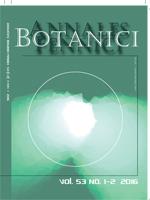Slime nets, Labyrinthula sp., were found associated with several seagrass species, e.g., Zannichellia palustris, Zostera marina and Myriophyllum sibiricum, and on the alga Vaucheria sp. in autumn and winter samples from western Åland (N Baltic Sea, salinity 4–6 PSU). Labyrinthula survived for many months and increased in dark and cool conditions among decaying plants, indicating a non-parasitic mode of life. Labyrinthula colonies from natural samples were studied in small chambers where the organism, even in cool water, settled and made new slimeways, filopods and lamellipods on the bottom glass. Labyrinthula was preyed upon by several amoeba species. Slime nets have probably been overlooked and they are seldom reported from the Baltic Sea.
How to translate text using browser tools
17 March 2016
Occurrence and Activity of Slime Nets, Labyrinthula sp. Among Aquatic Plants in Cold and Oligohaline Baltic Sea Waters
Tore Lindholm,
Christer Lindqvist,
Conny Sjöqvist
ACCESS THE FULL ARTICLE

Annales Botanici Fennici
Vol. 53 • No. 1–2
April 2016
Vol. 53 • No. 1–2
April 2016




